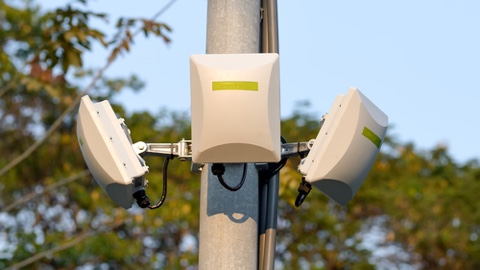
Delaware Governor John Carney recently signed into law The Advanced Wireless Infrastructure Investment Act that seeks to reduce the red tape required for installing small-cell wireless antennas — wireless towers that can be installed on telephone poles, traffic lights and street lamps – and make Delaware a more hospitable place for wireless companies to improve service. “In recognition of the shift from landline to wireless communications, the act authorizes wireless providers access to the state’s rights of way and establishes a statewide policy for deployment of small wireless cells to meet the growing demand for wireless services,” the bill summarizes. These small-cell antennas will become increasingly necessary as 5G technology, smart city data analysis, and autonomous transportation become prevalent. The Act allows carriers and their partners to apply to place small cells on public rights-of-way directly through the state’s department of transportation.
“With Governor Carney’s signature on this bill, Delaware took another step toward the future. The Governor recognizes that a strong mobile broadband infrastructure is important to the state’s continued economic competitiveness and leadership,” Denis Dunn, president of AT&T in Delaware, said. “We applaud everyone who worked on this legislation, including Senator Nicole Poore and Rep. Larry Mitchell, along with officials from the Delaware Department of Transportation.”
The bill was met with little opposition in Delaware, but residents in other states have opposed similar bills out of concerns that the boxes would be ugly and a potential health hazard. “The town council of Ship Bottom, N.J., voted unanimously to approve changes to the town’s land use code, specifically targeting wireless infrastructure,” Robert Gutman of Guggenheim Equity Research wrote. “Additionally, the city council of Lancaster, PA changed its zoning rules to prevent the deployment of small cells on public rights-of-way. These towns are the latest examples of a trend we have been seeing—an increase of towns taking steps to slow down the deployment of small cells.”


